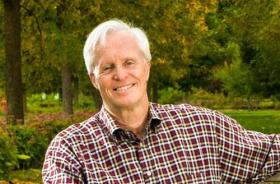The following commentary by Will Raap was written for Vermont Public Radio and aired on October 7, 2013. Listen to the commentary by visiting VPR’s website.
 A friend of mine asked me recently how we can tell if the Vermont economy is achieving our goals. After all, Vermont is a very small and dependent part of much larger national and global economies. We can never function autonomously.
A friend of mine asked me recently how we can tell if the Vermont economy is achieving our goals. After all, Vermont is a very small and dependent part of much larger national and global economies. We can never function autonomously.
I answered him that, like any successful enterprise, Vermont can decide what our competitive advantage is and invest in ways that strengthen that distinctiveness. Ideally, that investment also builds on and takes advantage of core Vermont assets and values, like our working landscape, community vitality, and the strong collaboration we have between government, the private sector and non-profits.
In the 1990’s one small non-profit, the Vermont Peace and Justice Center, undertook a long-term process to help improve wages in Vermont – and this effort continues to have a big impact. It showed that the Vermont economy is heavily dependent on imported goods and services, and as a result our largest export is cash.
The biggest “leaks” of cash out of the Vermont economy were caused by net imports of food, energy and financing – which included interest payments for consumer, mortgage and government debt.
A new approach to Vermont’s economy can help plug these leaks of cash. We can produce and distribute more food and energy in Vermont. We can develop ways to fund more of our debt by encouraging saving and investing more within the Vermont economy, instead of relying so much on Wall Street and big external banks.
Much of this is already happening in Vermont and adding to Vermont’s distinctiveness. Vermont’s New Economy Week events will encourage further leadership in these areas; leadership designed to strengthen the Vermont economy today and for decades to come.
Vermont is also leading the way towards a new economy by adopting new measures of economic success that offer an alternative to the predominant Gross Domestic Product. We’ve relied on GDP for 85 years as a proxy for economic prosperity. But GDP is a limited way to measure whether the Vermont economy is doing everything we want it to do. Most American households have experienced lower real income in the past decade even while the GDP has grown. Wealth is more concentrated. And this holds true for Vermont.
In order to measure what matters most to us, we need to have an annual report on the “State of the State’s Economy”, that shows not only what’s happening with growth in goods and services, but also with community vitality as well as drug addiction and hunger; the health of our topsoil and lakes; the creation of jobs that offer a path out of poverty; the launching of businesses with ownership rooted in Vermont. Such an economic dashboard could measure progress toward fulfilling and healthy lives for all Vermonters while nurturing the social and natural systems on which our whole economic system depends.






